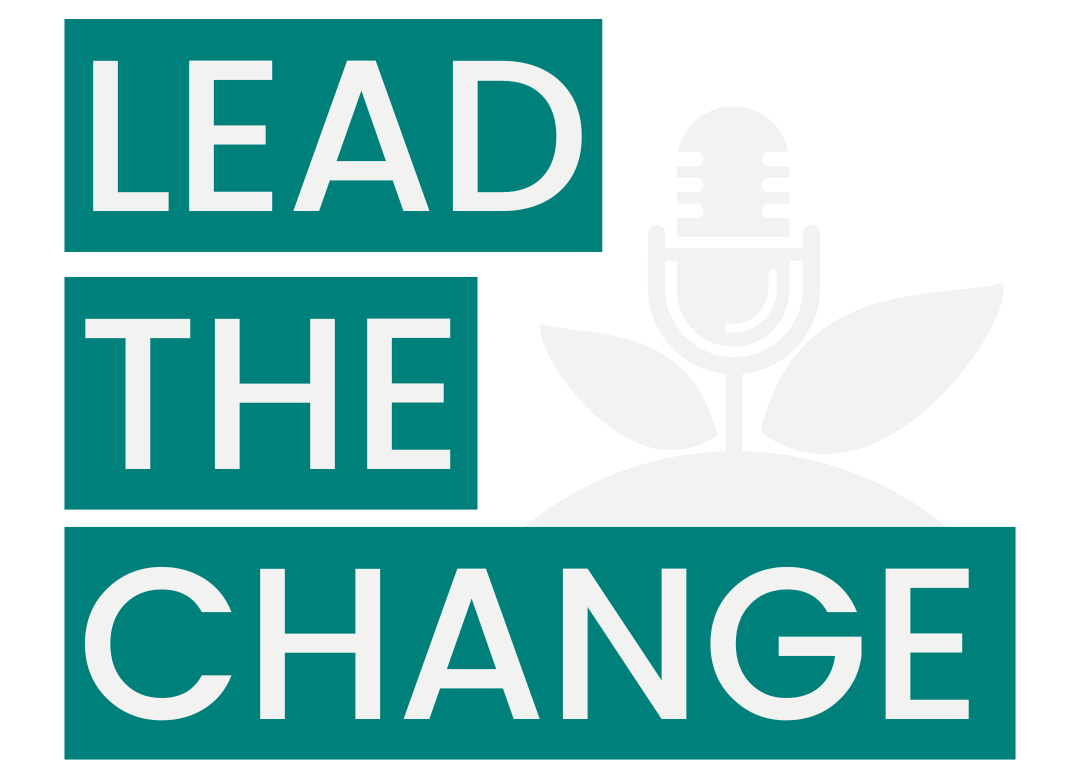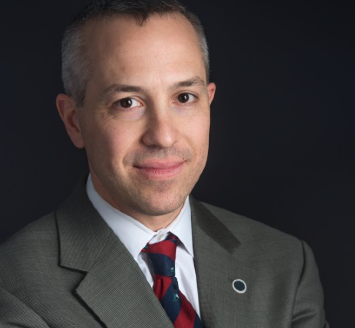
504: Closing the Loop on Commercial Textile Waste
Featuring Jessica Schreiber and Camille Tagle
Co-Founders, FABSCRAP
Impacting Textile Waste Recycling
Founded by Jessica Schreiber and Camille Tagle, FABSCRAP was created to meet New York City’s commercial textile recycling needs. Materials that traditionally would have gone to landfill are now being properly recycled and made available for reuse.
How Does FABSCRAP Deal with Fabric Waste?
FABSCRAP provides convenient pickup and recycling of textiles for businesses in New York City and Philadelphia.
Read more about their impact on textile waste in their most recent report: FABSCRAP 2023 Annual Report.
Jessica Schreiber on How Much Textile Waste is Produced Each Year
“I'll start on the post-consumer side, because we're most familiar with it. That’s what we wear, what we use, and then what happens when we're done with it. So, post-consumer used clothing, home goods, shoes, and accessories: in New York City, just our five boroughs, every year we throw out 200,000 tons, which is a lot of zeroes.
To put that in context, 200,000 tons is 14 times the weight of the Brooklyn Bridge, and we're throwing that out every single year. And that's just New York City, and so nationwide, I think it's 12.8, 12.5 million tons. Massive, massive amounts of material, and in New York, it's about 6% of the waste stream. So after you address traditional recyclables and then address food waste, it's the next biggest part of the waste stream. So it is something that cities that are going Zero Waste are going to have to solve for.”
Bard MBA’s Adam Rozenberg and Siri Wilson speak with Jessica and Camille about how their backgrounds in waste management and evening wear design inform their work in transforming the industry.
PHOTO BY Erica Schroeder
Read the article excerpt on GreenBiz>>
Adam Rozenberg: As co-founders of FABSCRAP what was your inspiration for starting an operation like this?
Jessica Schreiber: My background is in waste management. I studied climate science at Columbia and then interned at the New York City Department of Sanitation when they were launching their clothing recycling program, Refashion NYC. I was hired to run and grow that program. Then I also moved into E-waste, curbside composting, and apartment building recycling. So I've kind of worked in waste management throughout my career.
Camille Tagle: My background and career before FABSCRAP was actually in fashion design. I was an evening wear designer and I'm sure you guys can imagine that, evening wear in particular, is one of the most frivolous categories of apparel and those gowns and those cocktail dresses really are made and designed for just that one occasion and for one use. Most people almost always get a different outfit or dress or gown altogether for a different occasion.
So it was really through that time as a designer that I learned so much more about waste and the impacts and the domino effects of our actions. And I love design, it was a great fit for me personally, but I think it was just noticing what I was seeing and actually paying attention to what was happening to all these fabrics that were being thrown out season after season, even though they were beautiful and perfectly usable. And again, working in evening wear you have these really gorgeous silks, you have these really time intensive hand beaded pieces that are absolutely beautiful and perfectly reusable.
Jessica Schreiber: What Camille was experiencing personally, I was starting to hear from a lot of brands while I was at sanitation running the city's clothing recycling program. When a fashion company had a question about textile waste, it kind of found its way to my desk. And so there were several brands that wanted to know what they should be doing with their textile waste that wasn't clothing yet, all of the materials wasted during the design process, and it didn't really fit into what I was doing in the post-consumer world, like used clothing, used home goods, used shoes and handbags, this was all raw materials.
And so there were about thirty brands who had the same question and so I pulled them into a working group. And to their credit, they very non-competitively shared what the waste was, how much they were creating, how often, and what options they had found for where to send it. And that working group really became sort of the foundation for FABSCRAP. And so it was taking what I knew about the existing nonprofit infrastructure, the collections that I was overseeing at sanitation, and sort of just tweaking that a little bit so that it could work for businesses, and not just for consumers, and used goods.
Siri Wilson: Can you talk us through that textile waste management problem a little bit more, and actually how much fabric waste happens every year?
Jessica Schreiber: I'll start on the post-consumer side, because we're most familiar with it. That’s what we wear, what we use, and then what happens when we're done with it. So, post-consumer used clothing, home goods, shoes and accessories: in New York City, just our five boroughs, every year we throw out 200,000 tons, which is a lot of zeroes.
Siri Wilson: And where does it go?
Jessica Schreiber: Mostly to landfill.
Camille Tagle: If it's put in the trash, it's very rarely pulled out in any kind of usable condition. There's sort of a growing dumpster dive culture, where usable things are being pulled out, which is great, but if it's going into the landfill, or if it's going into the trash and then eventually a landfill, it's hard to pull it out and save it once it's been put in the trash.
Jessica Schreiber: To put that in context, 200,000 tons is 14 times the weight of the Brooklyn Bridge, and we're throwing that out every single year. And that's just New York City, and so nationwide, I think it's 12.8, 12.5 million tons. Massive, massive amounts of material, and in New York, it's about 6% of the waste stream. So after you address traditional recyclables and then address food waste, it's the next biggest part of the waste stream. So it is something that cities that are going Zero Waste are going to have to solve for.
Siri Wilson: For those that don't really know how FABSCRAP works, could you just explain it? If someone wanted to get some fabric at FABSCRAP, how does that whole process work?
Camille Tagle: I’ll describe a full circle look at our different operations, because there are a lot of different ways that people can get involved with us.
At the very beginning is the pickup. So if you imagine how in cardboard or plastic recycling, the truck shows up at a business and carts away the waste, that's a very similar way in which our pickups work, in that we come directly to a designer's studio or office, and they have filled bags that we've provided to them with for their textile waste, and then we take it to our warehouse. We provide them two different types of FABSCRAP bags. One of them is black colored and one of them is brown. The Black is for anything that is proprietary in nature so if there is a fabric where a print has a logo designed into it and that's something that they would rather not have the public source and see, then that's something that they can choose to put into that black scrap bag so that when it enters our warehouse, we know without any question: this is something that has to be sorted by the FABSCRAP team only, it can't go into a reuse room like this is definitely proprietary in nature, off limits.
If they do put it into a brown bag, then we know volunteers, and the public can sort and see. If it's really cool and interesting, we can snap a photo and share it with our community. If it's large enough, we can put it into our thrift store system for use. So it's a great way to accommodate that very specific creative challenge that a lot of design companies, whether it's fashion, or interior, or entertainment, definitely have concerns towards.
Once everything's collected from those brands and it enters or warehouse, everything is meticulously weighed and measured and cataloged because, as we've talked about, there hasn't been any tracking and any data, in the commercial sphere and so we feel like that's definitely something that we need to keep track of and understand so that we also understand what our impact is.
So everything is weighed, and put into our system and then really at that point, it's figuring out, “Okay, what is inside these bags?”, so that we can figure out how to keep it out of the landfill. So the easier and faster part of it is identifying anything for reuse. Anything that could be put into resale or thrift is anything that's large enough. Usually yardage, bigger cuttings that are about two yards, trims or any sort of embellishments, any leather hides, yarn cones, things like that. Those are pretty easy to identify and separate for reuse. The things that are a little bit more difficult are those sewing scraps that come from actually making the garment or from the cutting rooms. Also headers, which are, for those who are not as familiar, those are basically fabric swatches that mills will send to design teams as a way to kind of show their fabric collection and try to get orders from designers. A lot of those are a lot smaller and a lot more difficult to be reused. Those we separate by fiber type. And this is important because anything that does not contain spandex actually ends up getting down cycled into different forms of insulation or first shoddy and then the shoddy becomes different types of installation. But that is also really important because we want to track any of the fibers that have potential for fiber recycling.
%20h%20copy-1.jpg)




